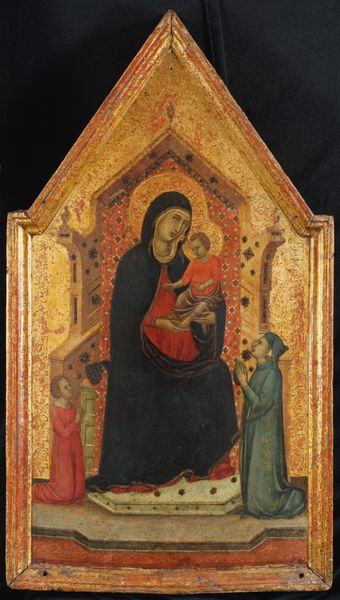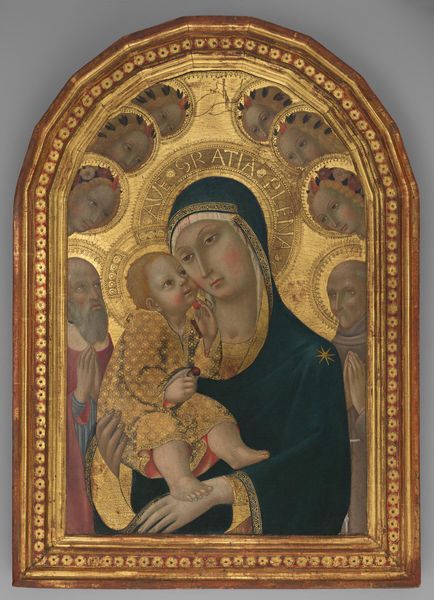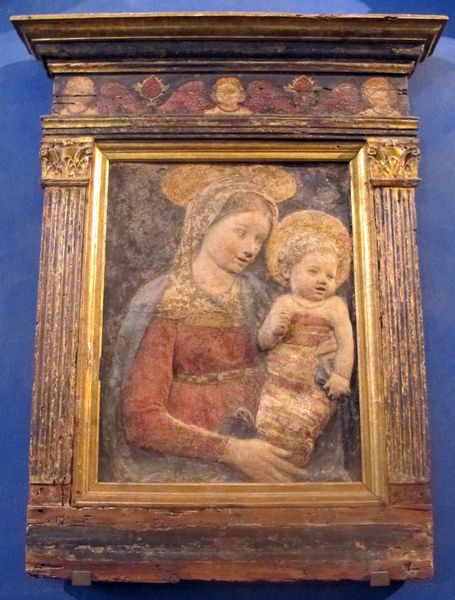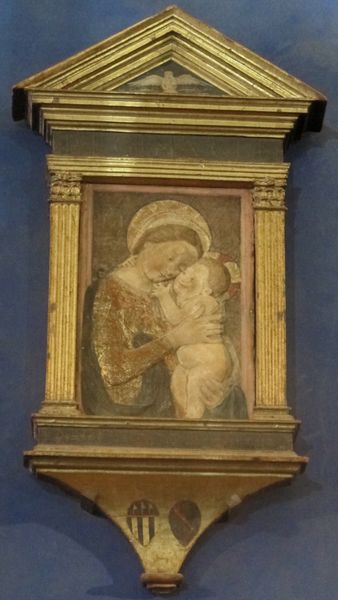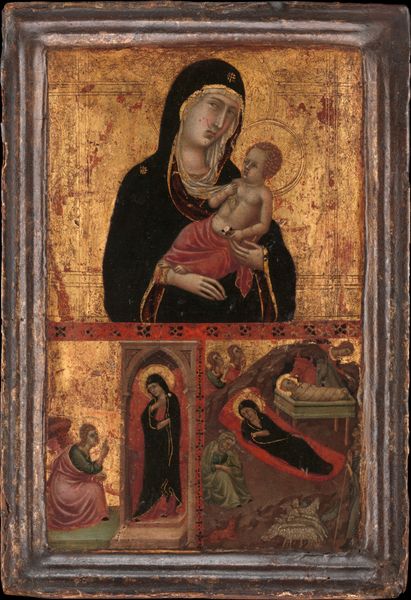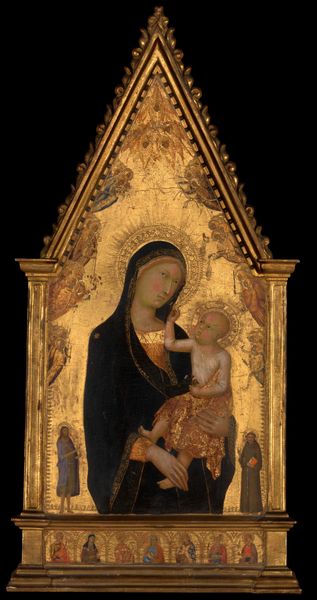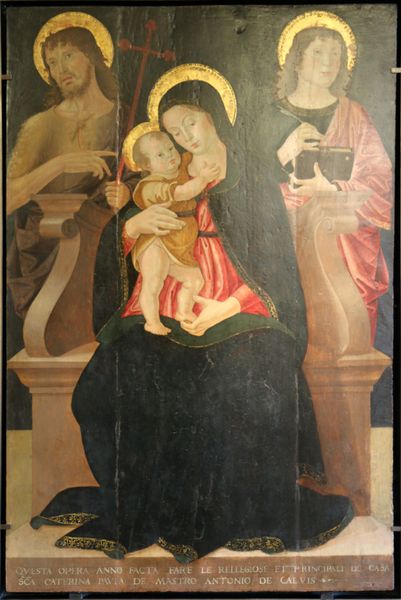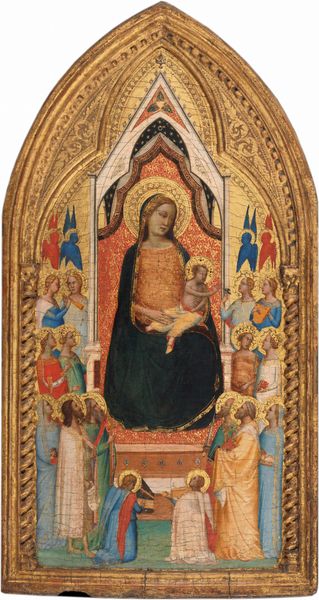
tempera, painting, oil-paint
#
portrait
#
tempera
#
painting
#
oil-paint
#
figuration
#
oil painting
#
history-painting
#
italian-renaissance
Copyright: Public domain
Lo Scheggia painted this ‘Madonna col bambino, angeli e padreterno’ using tempera on wood panel in fifteenth-century Italy. The smooth surface, precise lines, and bright colors are all hallmarks of tempera painting, a technique where pigments are bound with egg yolk. But look closer, and you’ll see that the material is not simply a vehicle for an image; it deeply informs its appearance. Tempera dries quickly and doesn’t allow for easy blending, resulting in sharp, clear forms that lend the work its characteristic graphic quality. The gold leaf, meticulously applied, adds a sense of divinity and richness, catching the light and drawing the viewer in. Painting in tempera, and gilding, were highly skilled trades, controlled by craft guilds. Apprentices would spend years mastering the techniques, learning to grind pigments, prepare panels, and apply gold leaf. So when we look at a work like this, we are seeing not just an act of artistic expression, but the product of a complex system of labor, skill, and tradition. By recognizing the value of these making processes, we expand our appreciation of ‘Madonna col bambino, angeli e padreterno’ challenging the traditional distinction between fine art and craft.
Comments
No comments
Be the first to comment and join the conversation on the ultimate creative platform.
